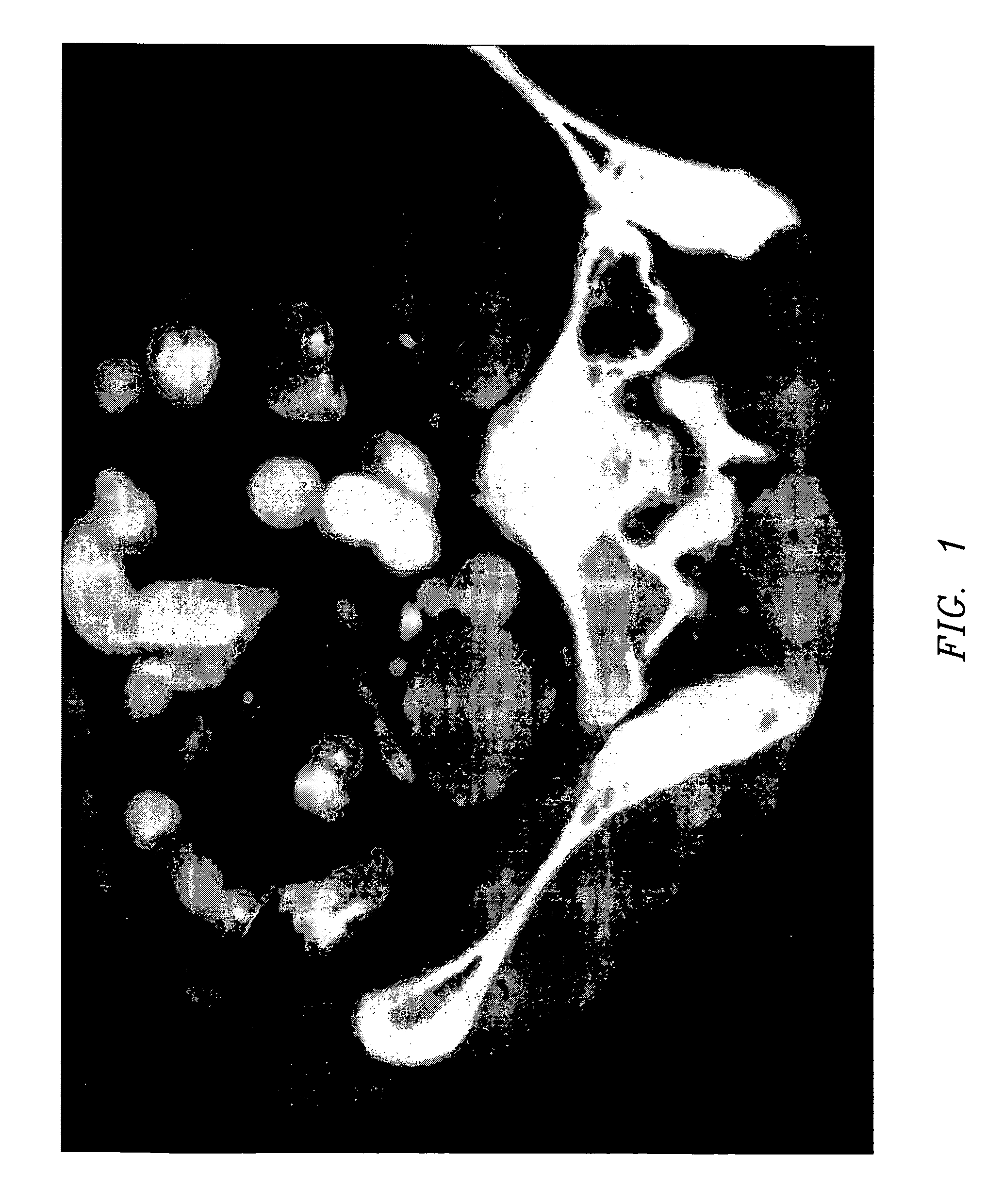Composition and method for direct visualization of the human appendix
a human appendix and visualization technology, applied in the field of composition and method for direct visualization can solve the problems of appendicitis, the appendix is particularly difficult to visualize and detect the pathology of the human appendix, and the appendicitis is an added diagnostic dilemma, so as to reduce the amount of undesirable patient side effects, reduce the effect of undesirable side effects, and convenient storag
- Summary
- Abstract
- Description
- Claims
- Application Information
AI Technical Summary
Benefits of technology
Problems solved by technology
Method used
Image
Examples
example 1
Case Study
[0085]A 26-year-old woman presented with vague right lower quadrant pain and tenderness, with equivocal peritoneal signs. A prepared solution of the invention was administered as a single 224-mL oral bolus. Subsequent helical CT scans of the right lower quadrant were performed at 50-min post administration, utilizing 5 mm and 7 mm collimation, 120 kV, 250 mA, and 1.0 s scans, reconstructed in the soft tissue algorithm at a window level of +50 HU and window width of +450. A contrast opacified appendix was demonstrated at 50 minutes, designated as FIG. 1.
example 2
Case Study
[0086]A 47-year-old man presented with focal right lower quadrant pain, peritoneal tenderness, and fever. A prepared solution of the invention was administered as a single 224-mL oral bolus. Subsequent helical CT scans of the right lower quadrant were performed at 50-min post administration, utilizing 5 mm and 7 mm collimation, 120 kV, 250 mA, and 1.0 s scans, reconstructed in the soft tissue algorithm at a window level of +50 HU and window width of +450. The appendiceal orifice was obstructed, revealing a classic ‘beak sign’ of appendicitis, with surrounding peritoneal inflammatory inflammatory changes, consistent with appendicitis, designated as FIG. 2.
example 3
Case Study
[0087]A 47-year-old man presented with intermittent right lower quadrant pain on a chronic basis over a period of greater than one month. No clinical signs of appendiceal inflammation were present, including fever, peritoneal tenderness, or leukocytosis. A prepared solution of the invention was administered as a single 224-mL oral bolus. Subsequent helical CT scans of the right lower quadrant were performed at 50-min post administration, utilizing 5 mm and 7 mm collimation, 120 kV, 250 mA, and 1.0 s scans, reconstructed in the soft tissue algorithm at a window level of +50 HU and window width of +450. The appendiceal orifice was obstructed, revealing a thickened appendix and adjacent small calculus, an appendicolith, considered diagnostic for chronic adult appendicitis, designated as FIG. 3.
PUM
| Property | Measurement | Unit |
|---|---|---|
| length | aaaaa | aaaaa |
| response time | aaaaa | aaaaa |
| weights | aaaaa | aaaaa |
Abstract
Description
Claims
Application Information
 Login to View More
Login to View More - R&D
- Intellectual Property
- Life Sciences
- Materials
- Tech Scout
- Unparalleled Data Quality
- Higher Quality Content
- 60% Fewer Hallucinations
Browse by: Latest US Patents, China's latest patents, Technical Efficacy Thesaurus, Application Domain, Technology Topic, Popular Technical Reports.
© 2025 PatSnap. All rights reserved.Legal|Privacy policy|Modern Slavery Act Transparency Statement|Sitemap|About US| Contact US: help@patsnap.com



